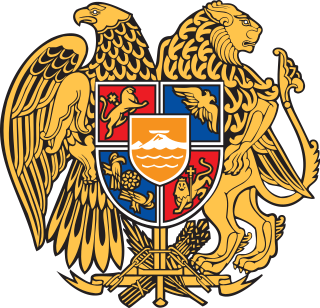
Since its independence, Armenia has maintained a policy of trying to have positive and friendly relations with Iran, Russia, and the West, including the United States and the European Union. It has full membership status in a number of international organizations, such as the Council of Europe and the Eurasian Economic Union, and observer status, etc. in some others. However, the dispute over the Armenian genocide of 1915 and the ongoing Nagorno-Karabakh conflict have created tense relations with two of its immediate neighbors, Azerbaijan and Turkey.

Artsakh, officially the Republic of Artsakh or the Republic of Nagorno-Karabakh, was a de facto breakaway state in the South Caucasus whose territory was internationally recognised as part of Azerbaijan. Between 1991 and 2023, Artsakh controlled parts of the former Nagorno-Karabakh Autonomous Oblast, including its capital Stepanakert. It had been an enclave within Azerbaijan from the 2020 Nagorno-Karabakh war until the 2023 Azerbaijani offensive, when the Azerbaijani military took control over the remaining territory controlled by Artsakh. Its only overland access route to Armenia after the 2020 war was via the 5 km (3.1 mi) wide Lachin corridor, which was placed under the supervision of Russian peacekeeping forces.
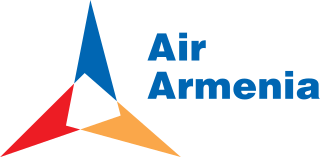
Air Armenia CJSC was a passenger and cargo airline with its head office in Yerevan, Armenia, and base at Zvartnots International Airport.

The Nagorno-Karabakh conflict is an ethnic and territorial conflict between Armenia and Azerbaijan over the disputed region of Nagorno-Karabakh, inhabited mostly by ethnic Armenians until 2023, and seven surrounding districts, inhabited mostly by Azerbaijanis until their expulsion during the 1990s. The Nagorno-Karabakh region has been entirely claimed by and partially controlled by the breakaway Republic of Artsakh, but is recognized internationally as part of Azerbaijan. Azerbaijan gradually re-established control over Nagorno-Karabakh region and the seven surrounding districts since 2020.

The Republic of Artsakh was a republic with limited recognition in the South Caucasus region. The Republic of Artsakh controlled most of the territory of the former Nagorno-Karabakh Autonomous Oblast. It is recognized only by three other non-UN member states, Abkhazia, South Ossetia and Transnistria. The rest of the international community recognizes Artsakh as part of Azerbaijan. In November 2012, a member of Uruguay's foreign relations committee stated that his country could recognize Nagorno-Karabakh's independence. In 2012, Armenia and Tuvalu established diplomatic relations and it was expected that Tuvalu may recognize Artsakh's independence. In October 2012, the Australian state of New South Wales recognized Nagorno-Karabakh. In September 2014, the Basque Parliament in Spain adopted a motion supporting Artsakh's right to self-determination and in November 2014, the Parliament of Navarre, also in Spain, issued a statement supporting Artsakh's inclusion in taking part in settlement negotiations.
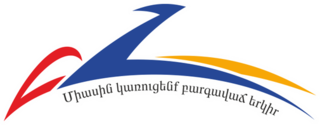
Prosperous Armenia Party, is a conservative political party in Armenia. It was founded by businessman Gagik Tsarukyan on 30 April 2004, when the constituent congress of the party took place.

Siranush Harutyunyan, known professionally as Sirusho, is an Armenian singer and songwriter. She received her first award when she was nine years old for her song "Lusabats". Sirusho's first studio album, Sirusho, was released in 2000 followed by the second album Sheram in 2005. In the same year, she was awarded the Future of Armenian Music, Best Album and Best Female Performer awards in the first Armenian National Music Awards.
The mass media in Armenia refers to mass media outlets based in Armenia. Television, magazines, and newspapers are all operated by both state-owned and for-profit corporations which depend on advertising, subscription, and other sales-related revenues. Armenia's press freedoms improved considerably following the 2018 Velvet Revolution.

The Lachin corridor is a mountain road in Azerbaijan that links Armenia and Nagorno-Karabakh.

PanARMENIAN.Net is the first Armenian online news agency, an internet portal based in Yerevan, Armenia. The PanARMENIAN.Net information-analytical portal is one of the projects of the "PanArmenian Network" NGO. It was launched on April 2, 2000. PanARMENIAN.Net provides information and analysis about the main events in the social and political life of Armenia, as well as events taking place all over the world that are connected with Armenia directly or indirectly. Topics covered: Politics, Armenia and World, Society, Economics, Region, Sport, Culture, IT & Telecommunications.
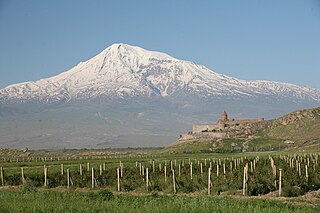
Tourism in Armenia has been a key sector to the Armenian economy since the 1990s when tourist numbers exceeded half a million people visiting the country every year. The Armenian Ministry of Economy reports that most international tourists come from Russia, EU states, the United States and Iran. Though relatively small in size, Armenia has four UNESCO world heritage sites.
Armenpress is the oldest and the main state news agency in Armenia.

IPSC Armenia, also known as the Practical Shooting Federation of Armenia is the governing body for practical shooting in Armenia. Its headquarters are located in Yerevan.

The Ministry of Emergency Situations of Armenia (MES) is a government agency overseeing the civil emergency services in Armenia. The ministry was formed by presidential decree on 21 April 2008.

The July 2020 Armenian–Azerbaijani clashes began on 12 July 2020 between the Armenian Armed Forces and Azerbaijani Armed Forces. Initial clashes occurred near Movses in Tavush Province of Armenia, and Ağdam in Tovuz District of Azerbaijan at the Armenian–Azerbaijani state border.

The Second Nagorno-Karabakh War was an armed conflict in 2020 that took place in the disputed region of Nagorno-Karabakh and the surrounding occupied territories. It was a major escalation of an unresolved conflict over the region, involving Azerbaijan, Armenia and the self-declared Armenian breakaway state of Artsakh. The war lasted for 44 days and resulted in Azerbaijani victory, with the defeat igniting anti-government protests in Armenia. Post-war skirmishes continued in the region, including substantial clashes in 2022.
The casualties of the Second Nagorno-Karabakh War, fought between Armenia, the self-proclaimed Republic of Artsakh and Azerbaijan, officially number in the low thousands. According to official figures released by the belligerents, Armenia and Artsakh lost 3,825 troops, with 187 servicemen missing in action, while Azerbaijan lost 2,906 troops, with 6 missing in action. The Syrian Observatory for Human Rights reported the deaths of 541 Syrian fighters or mercenaries fighting for Azerbaijan. However, it is believed that the sides downplayed the number of their own casualties and exaggerated the numbers of enemy casualties and injuries.
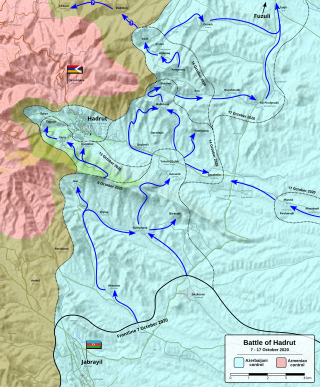
The Battle of Hadrut began in early October 2020 in Hadrut and its surrounding villages and heights, now seat of Khojavend District, Azerbaijan, and earlier controlled by the self-proclaimed Republic of Artsakh and was part of Hadrut Province.

The Battle of Shusha was a battle fought between the armed forces of Azerbaijan and the self-proclaimed Republic of Artsakh, militarily supported by Armenia, over the control of the city of Shusha, during the Second Nagorno-Karabakh War. The battle is considered one of the bloodiest battles of the war.

The bombardment of Tartar was the bombardment of the cities, towns, and villages in Tartar District of Azerbaijan by the Armenian Armed Forces and the Artsakh Defence Army with artillery, missiles, and cluster munitions during the Second Nagorno-Karabakh War. The bombardment of the district started on the second day of the war, on 28 September, when the Armenian forces shelled the city of Tartar, the administrative center of the district, and Shikharkh, which was built for the Azerbaijani refugees of the First Nagorno-Karabakh War.

















